Many of us have heard the tale of troublesome Erik the Red, who found his way to Greenland after being exiled from Norway and Iceland for murder. It is said that he named Greenland somewhat misleadingly in order to persuade his countrymen to settle there – well, astonishingly it worked, and his original voyage in AD 984 officially marks the start of the Viking era in Greenland.
Between AD 984 and an unknown year in the 1400s, the Vikings (or Norsemen) of Greenland represented European civilisation’s most remote outpost. They lived in two settlements on Greenland’s west coast. ‘Western Settlement’ which actually lay more north than west of ‘Eastern Settlement’, was located at the head of what we know as Nuuk Fjord today. Eastern settlement was much bigger (around two or three thousand inhabitants to Western settlement’s 500) and was spread all over the area that we now know as South Greenland.
Although the Norsemen built a thriving society in Greenland that lasted for over 400 years, the reason for their disappearance remains one of Greenland’s greatest mysteries. There are many theories but there’s no general agreement on how and why the whole society vanished at some point in the 1400s.
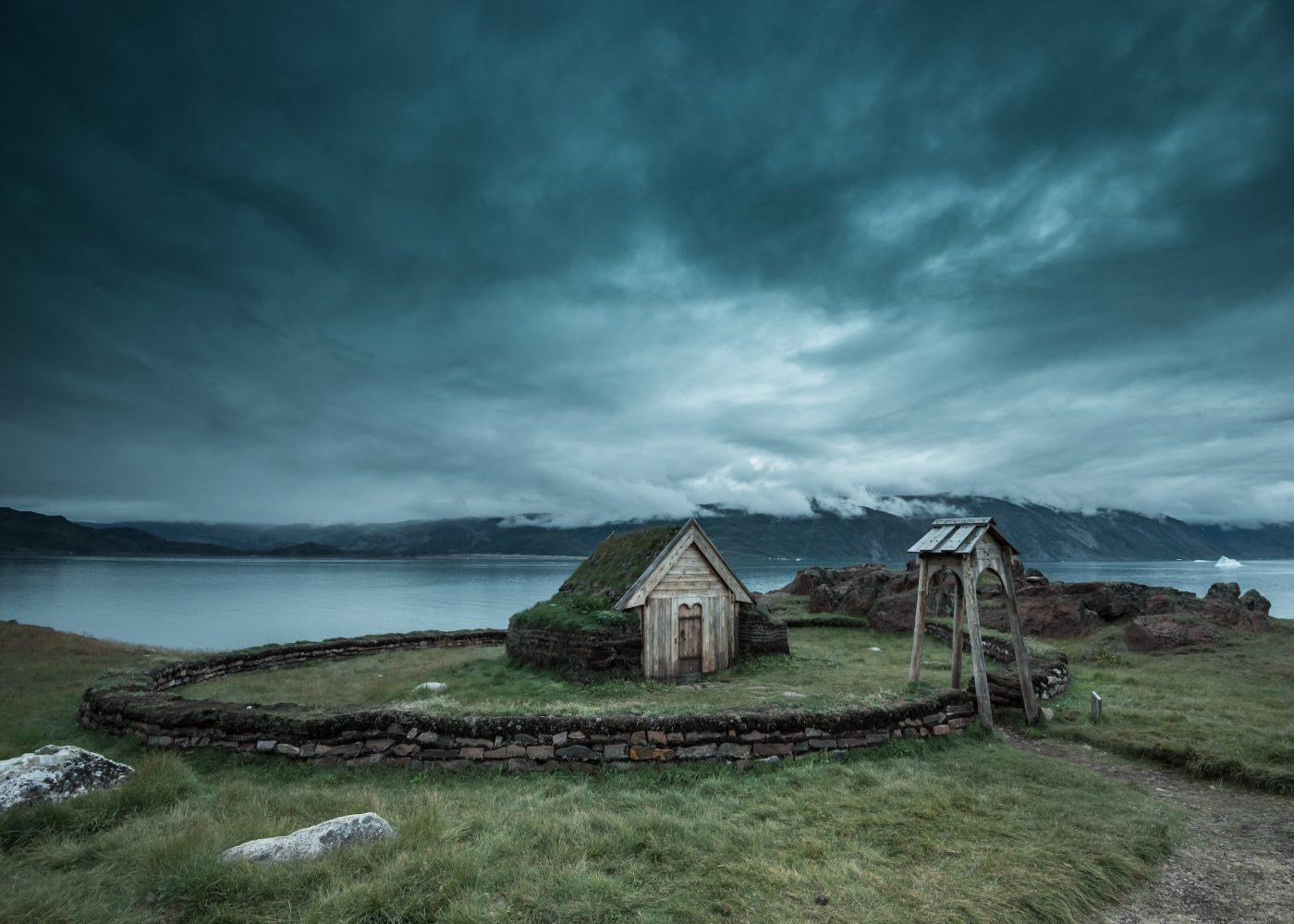
Continues further down the page...
Norse Greenland society was a delicate balance. Back in Norway and Iceland, Viking society relied on livestock farming, the production of dairy products like butter, cheese and skyr (Icelandic yoghurt), and on the status of the church. Translating this lifestyle to a climate as harsh and remote as Greenland required the development of a complex, interdependent economy. Everything was intricately planned, and society was rigidly structured. Generally speaking, it worked, but it also left society vulnerable, as failure of just one of the components could send everything into crisis.
There are 5 long-term concerns with which the Norsemen continually battled throughout their time in Greenland.
Although the south is the lushest part of the country, Greenland’s natural resources are not sufficient enough to support a large farming society. Much of the livestock the Norse brought with them from Norway turned out to be unsuitable for Greenland’s colder climate. The grazing season for cows was shorter than what they were used to, meaning that cattle had to be kept indoors for a longer period of the year and fed on hay – which needed to be grown and harvested.
As a result of the difficulty with farming, the Norse turned to hunting to supplement their food supply. They began hunting reindeer and seals on a large scale soon after they arrived in Greenland. The Vikings had some experience of hunting from Norway and Iceland, and the large-scale, communal, tightly coordinated nature of the hunt for these animals was somewhat suited to their previous knowledge.
Scholars in the past have argued that the Vikings’ downfall was their apparent lack of learning from the Inuit in this respect. The Inuit had developed clever and efficient ways of hunting whales and ringed seals, and although the Norse probably witnessed them hunt, it appears that they never tried to master these techniques themselves. Hunting in heavy boats made of wood rather than the Inuit’s lithe kayaks made of sealskin, the Norse were arguably at a disadvantage in terms of hunting.
However, some argue that there simply was not a food shortage in Greenland urgent enough to encourage a drastic overhaul of the hunting strategies that appeared to have been working well for the Norsemen so far.
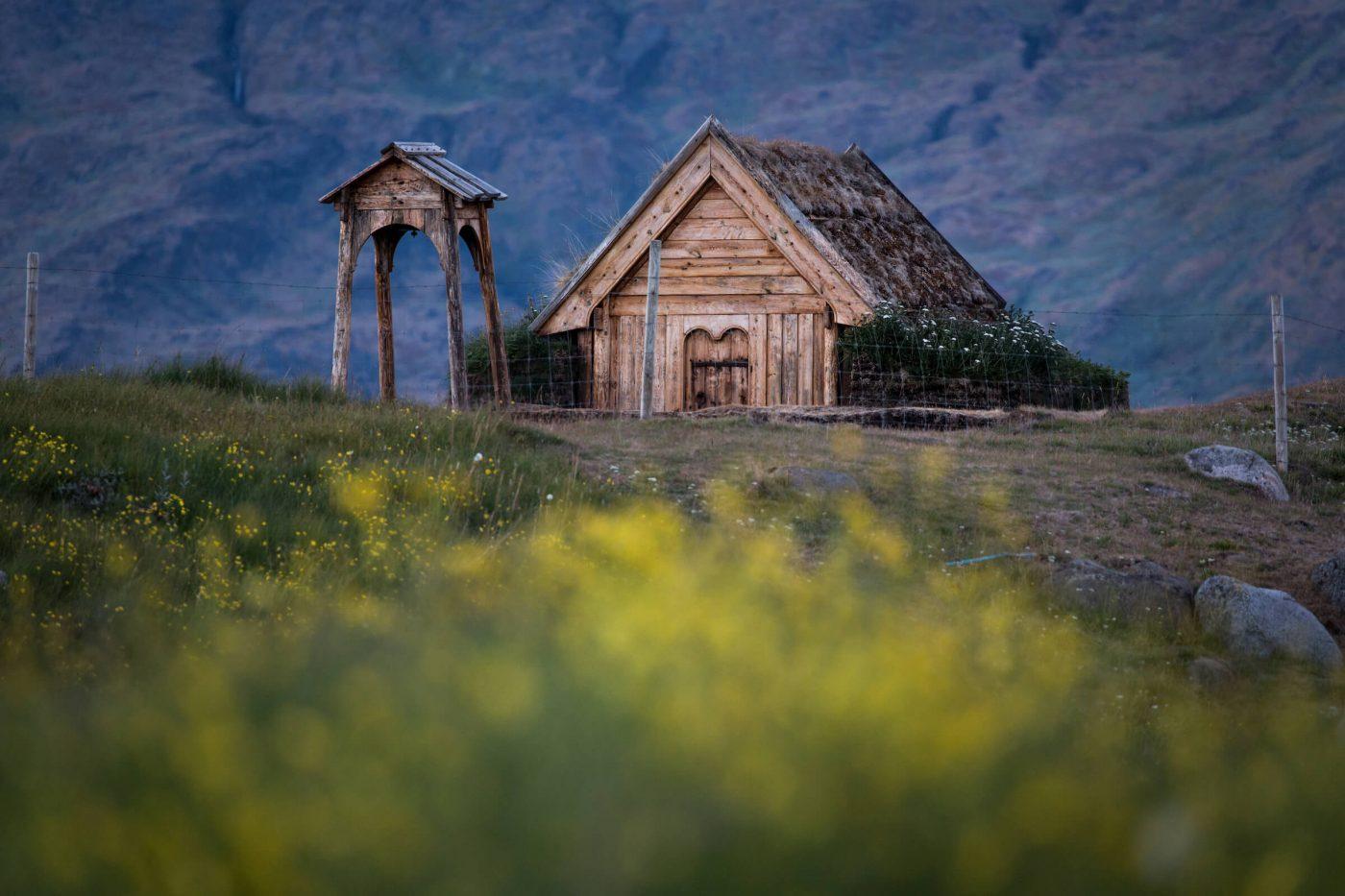
At the time the Vikings arrived in Greenland, and up until about the year 1300, the climate was relatively mild – perhaps slightly warmer than Greenland’s weather today. These conditions were favourable for growing hay and pasturing animals. However, gradually the climate became cooler and more variable, until the ‘Little Ice Age’ hit in the early 1400s. The colder weather made it much harder to grow hay and clogged the ship lanes between Greenland and Norway with sea ice, so that it was harder to get ships to the remote Norsemen.
There was no way that the Norse could have foreseen the upcoming cold cycle the way that we can foresee climate changes today, yet they tackled these challenges head on, increasing their reliance on sheep and goats, which are less choosy than cows when it comes to grazing.
3. Contact with Norway
Norway was Norse Greenland’s main trading partner, and originally had a high demand for goods that it could only get from Greenland, like ivory from walrus tusks. However, when Norway could once again trade with Asia and East Africa for elephant ivory, they had less demand for Greenland’s exports.
Norway also had its own problems to contend with, such as the Black Death (1349-50), which gradually made sending ships to Greenland less of a priority. Less contact with Norway meant that the Greenland Norse gradually lost touch with their identity as Christians and Europeans.
The Inuit migrated from the Canadian Arctic to Northwest Greenland in around the year AD 1200, which meant that the Vikings and Inuit shared Greenland for centuries. It is highly likely that the two groups had contact with each other, but we don’t know how well-established or favourable their relations were. Many scholars today believe that, in general, the two groups traded and respected each other’s settlements.
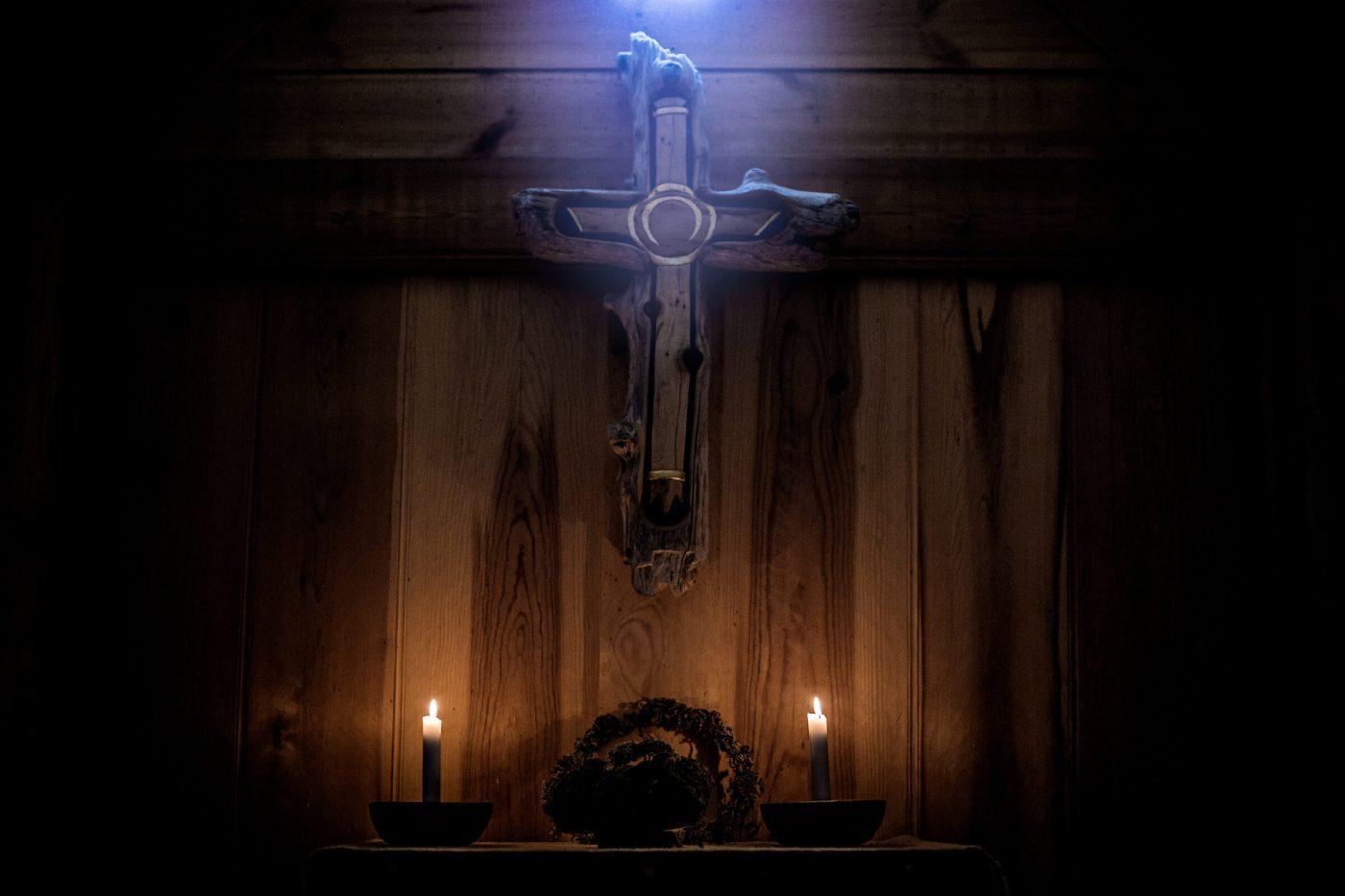
Greenland Norse society was very hierarchical. Religion and the church were the pillars of society, and this justified great differences in social status and wealth. Some reports have blamed this apparent dependence on the church for the collapse of Norse Greenland, claiming that the Norse prioritised relations with their European counterparts over adapting fully to the conditions of living in Greenland.
An oft-cited example of this is the long-range walrus hunt that was an important activity for the colony right until its end. These hunts secured luxury goods like walrus ivory and furs which the Norse exported to Europe. Some scholars have argued that the time, manpower and boats used for these missions, in hindsight, was misdirected.
However, recent research has suggested that the motive behind the Norsemen settling in Greenland might actually have been primarily to access these Arctic luxuries, which explains why so much emphasis was put on the walrus hunt, especially in the later years when Norse society began to decline.
The smaller Western Settlement was the first one to vanish completely, but the reason for its final downfall remains unclear. A clerical steward who visited the settlement around 1350 wrote that the Inuit had taken over the entire Western settlement, but frustratingly did not elaborate on this.
Some scholars suggest that the increasingly cold conditions led to starvation in the smaller and more isolated settlement, while others think it more likely that the residents were overrun by an attack from the Inuit.
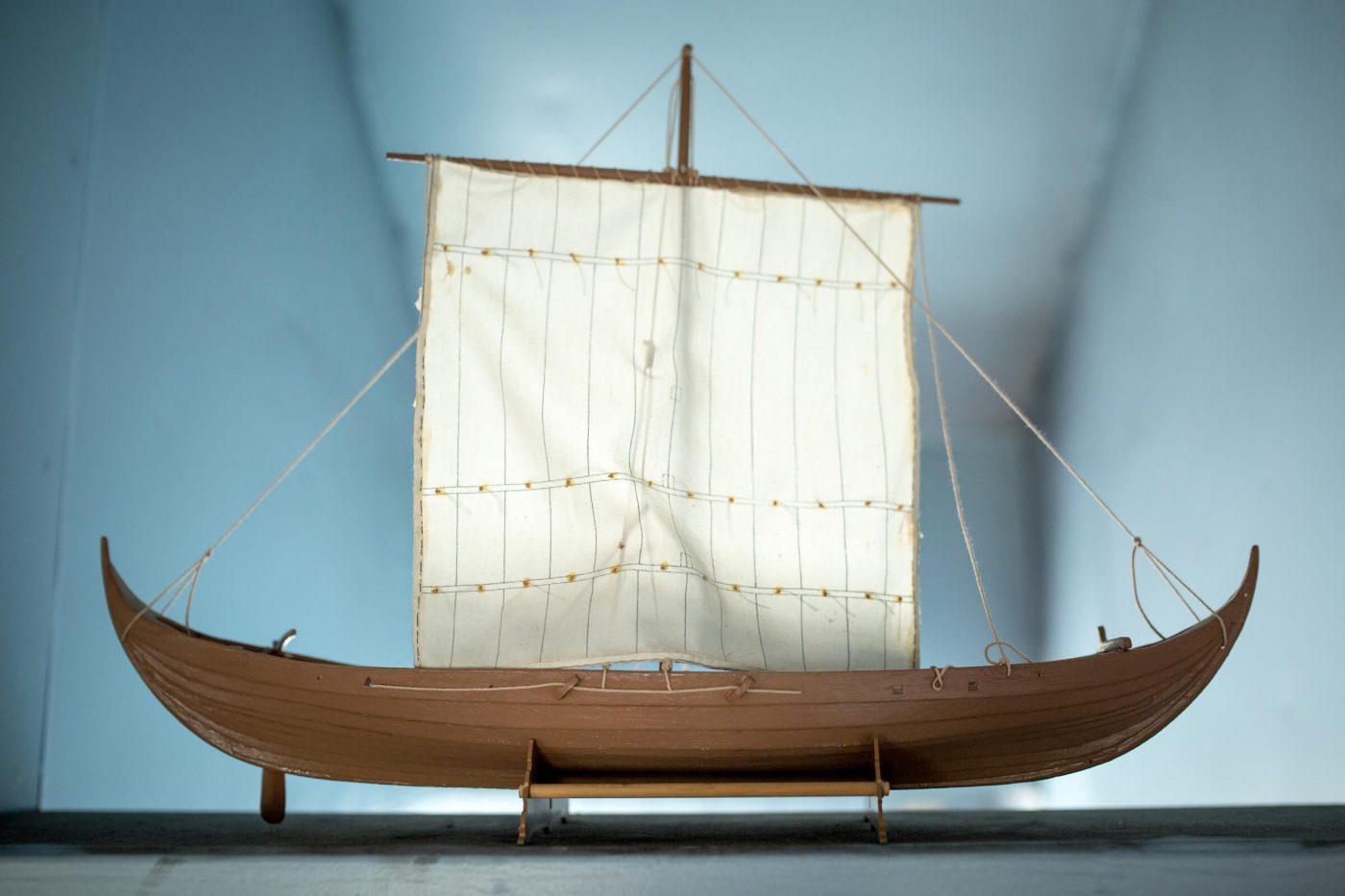
This is the chapter of the Viking era that is maybe the most mysterious – what finally caused the end of the larger Eastern Settlement in South Greenland?
The last written accounts of Eastern Settlement are from the year 1408, and seemed to tell of ‘business as usual’ in the settlement. The last ship returned from Greenland to Norway in 1410 and after this the climate in the North Atlantic got colder and stormier, so ship traffic finally ceased.
The last bishop died around 1378, and no new bishop arrived to replace him. But priests had to be ordained by a bishop, and without an ordained priest people couldn’t be baptised, married, or receive a Christian burial. After the last ordained priest died, it is easy to imagine that society at Eastern settlement began to struggle.
Many reports in the past have blamed the supposed conservative, over-exploitative nature of the Norse Greenlanders for the society’s decline, suggesting that the Norsemen clung stubbornly to the European way of life and refused to change. Today, however, most scholars see the Norsemen as highly adaptive and resourceful, citing the many changes they embraced in farming and hunting practices.
However, assuming that the Norsemen were well-adapted only makes their disappearance even more complex and mysterious. It is likely that the 5 long-term concerns mentioned above contributed to some extent to making life difficult for the Vikings in Greenland, but that the decreasing demand for walrus ivory from Europe was perhaps the largest obstacle for them.
Towards the end, Norse Greenlanders were probably faced with an impossible choice, as it became clear that their mission in Greenland was almost doomed – demand for walrus ivory was declining, diminishing their trading power and leaving them more vulnerable to starvation or attack from the Inuit.
Perhaps the only option was to pack up and sail back to Europe. But fleeing to Europe was not really a ‘return’ for the Norse – by this point they had been in Greenland for at least 400 years. Having grown up as seal and walrus hunters, there is no reason that Norse Greenlanders would have felt that Europe was a place for them. It would have been a huge step for them to leave behind their homeland and the society which they had built up from nothing.
Although much focus is placed on their demise, the Norsemen of Greenland are in many ways a success story. They managed to build a society that, for more than 400 years, was completely self-sufficient in terms of food production – nowadays, much of Greenland relies heavily on food imports from Denmark.
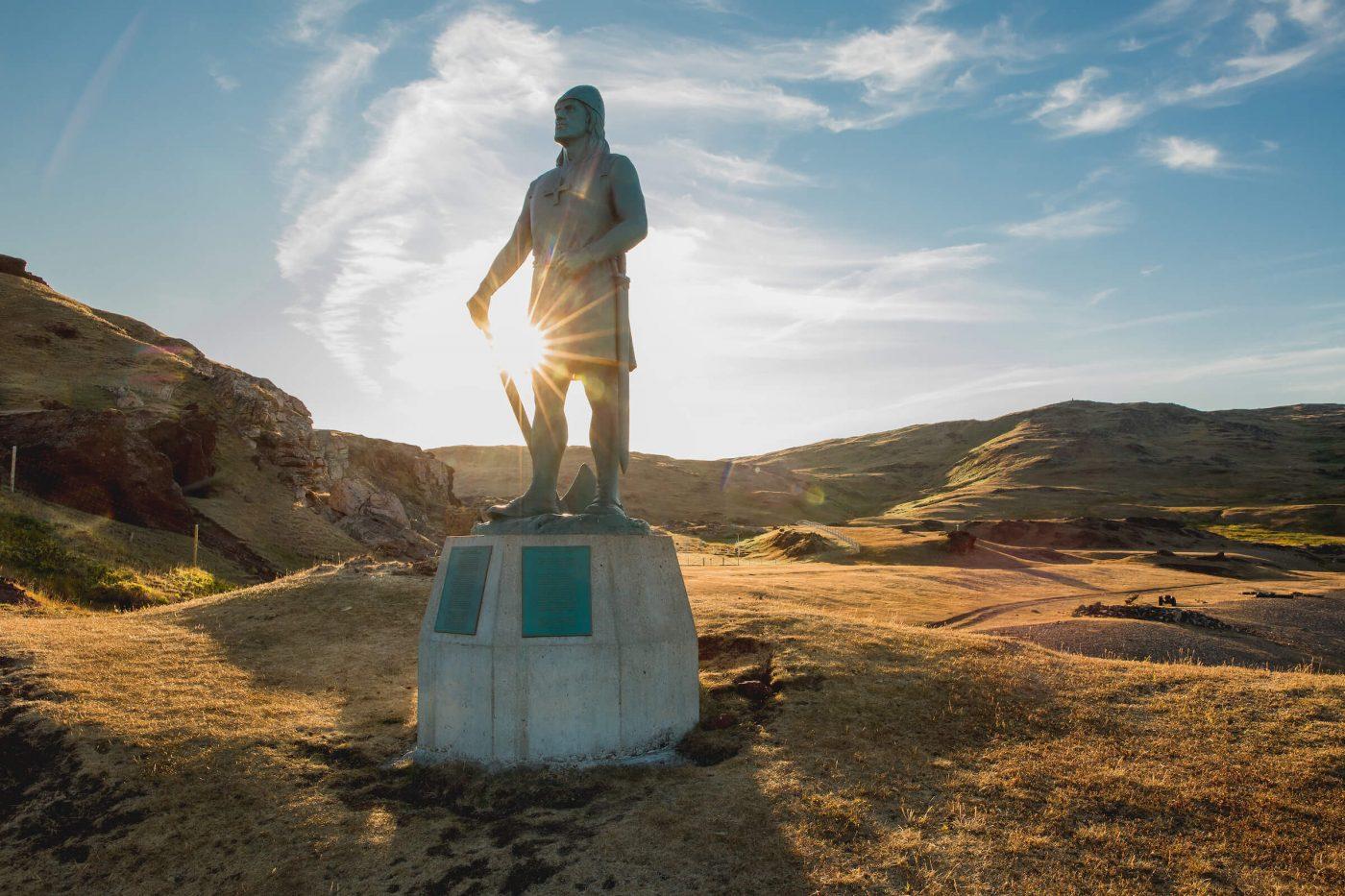
However, the hierarchical structure of the society created a conflict between the short-term interests of those in power, and the long-term interests of the society as a whole. Prioritising luxury exports for Europe used resources that would have been better spent on farming, if the main objective had been survival. However, if the main objective was indeed securing these Arctic luxuries, we can label Norse Greenland society a huge success.
The Vikings’ success story lives on in South Greenland today, as the farming culture they introduced is a central part of the cultural landscape, and has earned the area status as a UNESCO World Heritage Site. Dotted around the settlements of South Greenland there are several sheep farms that also serve as guest houses where you can really immerse yourself in the local farming culture.
In 1783, Norwegian Anders Olsen and his Greenlandic wife Tuperna resettled Igaliku, the old farm of Gardar. Today, their descendants still farm the fields of the Norse Greenlanders, taking influence from the Norsemen farmers and Greenlandic cultural traditions alike.
Brattahlid, the farm of Erik the Red himself, is perhaps one of the best preserved of the old Norsemen settlements. The Qassiarsuk area is also home to a reconstruction of a Viking longhouse and Tjodhilde’s Church which was the first Christian church built on the North American continent.
Hvalsey Church is also well preserved and is maybe the most visited of the Norsemen ruins, being situated close to the largest town in South Greenland, Qaqortoq. Around the church lie the remains of the residential halls, barns, storehouses, boathouses and pastures that sustained Norse Greenland society.
Find more information about your trip in the footsteps of South Greenland’s Vikings here.
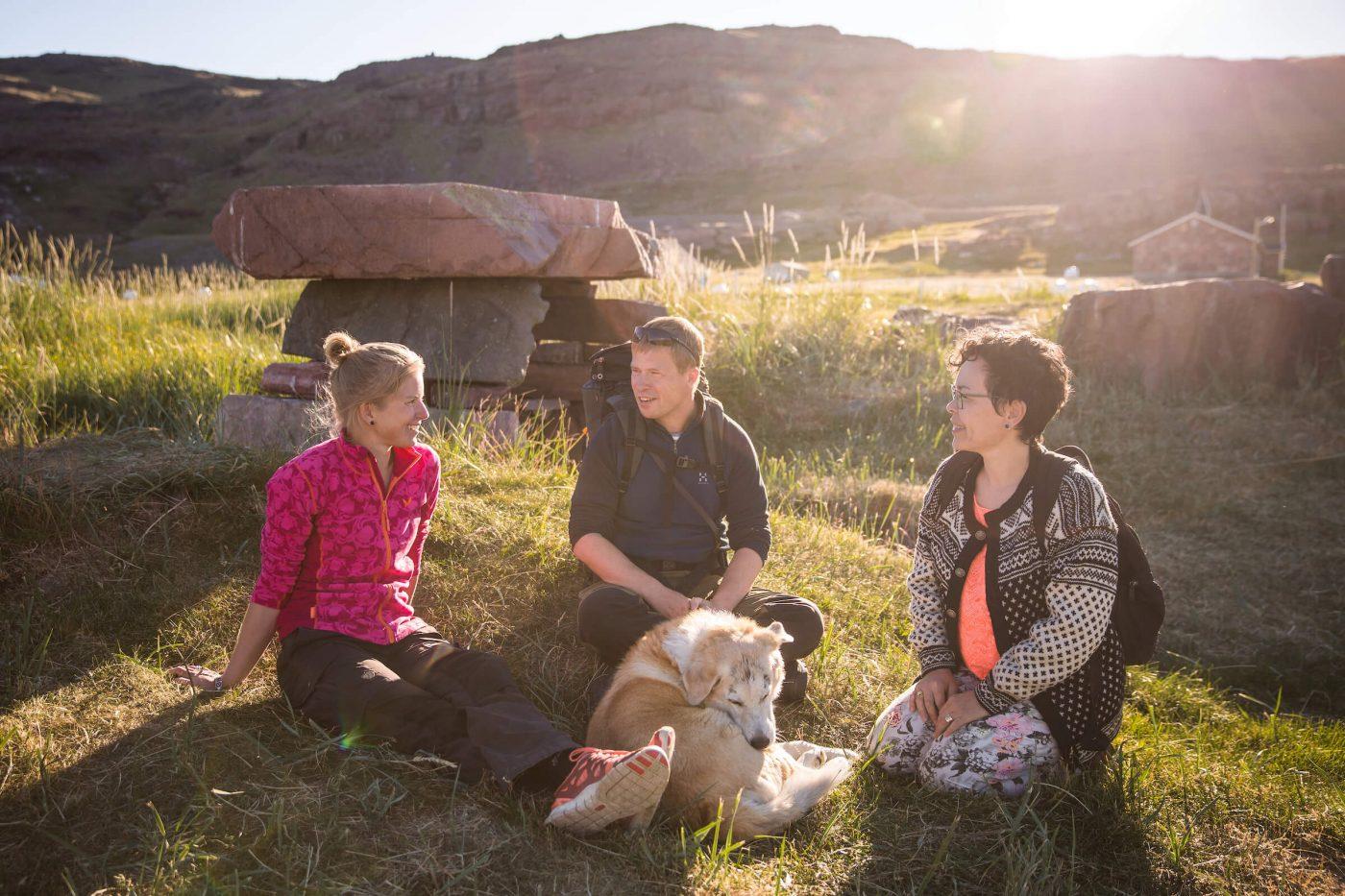
Thanks to Christian Koch Madsen at the Greenland National Museum & Archives for his invaluable input to this article.
To read more about the rise and fall of Greenland’s Norse era, check out the following sources: